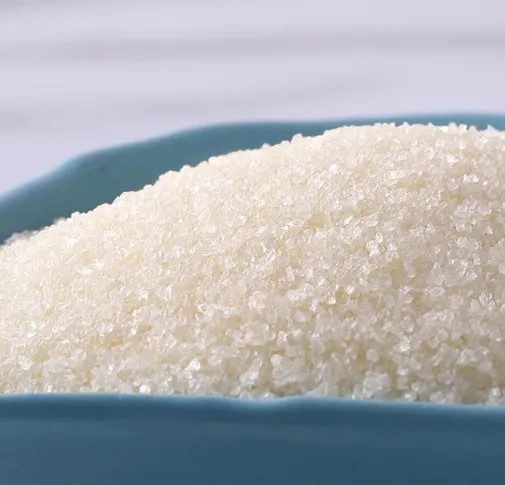Warning: Undefined array key "title" in /home/www/wwwroot/HTML/www.exportstart.com/wp-content/themes/1198/header.php on line 6
Warning: Undefined array key "file" in /home/www/wwwroot/HTML/www.exportstart.com/wp-content/themes/1198/header.php on line 7
Warning: Undefined array key "title" in /home/www/wwwroot/HTML/www.exportstart.com/wp-content/themes/1198/header.php on line 7
Warning: Undefined array key "title" in /home/www/wwwroot/HTML/www.exportstart.com/wp-content/themes/1198/header.php on line 7
Dec . 10, 2024 05:13 Back to list
sodium cyclamate and sodium saccharin
Sodium Cyclamate and Sodium Saccharin A Sweet Comparison
In the realm of artificial sweeteners, sodium cyclamate and sodium saccharin have garnered considerable attention, often compared for their unique properties, uses, and health implications. Both compounds are synthetic sweeteners that provide an alternative to conventional sugar, particularly for those seeking to reduce caloric intake, manage diabetes, or minimize sugar-related health risks. This article aims to explore the characteristics, benefits, and controversies surrounding these two sweeteners, while also considering their impact on consumer choices and public health.
Sodium Cyclamate Properties and Uses
Sodium cyclamate, known for its intense sweetness, is approximately 30 to 50 times sweeter than sucrose (table sugar). It is a cyclic sulfonamide that was first discovered in the 1930s and gained popularity in the 1950s as a low-calorie sweetener. Often found in a variety of processed foods and beverages, sodium cyclamate is commonly used in products like soft drinks, desserts, and table sweeteners.
The sweetness of sodium cyclamate is unique; it has a smooth taste that lacks the bitter aftertaste commonly associated with some other artificial sweeteners. Its stability under heat makes it a suitable choice for cooking and baking, offering versatility that appeals to both food manufacturers and consumers.
Sodium Saccharin A Historical Perspective
Sodium saccharin, recognized as one of the oldest artificial sweeteners, was discovered in the late 19th century. Its sweetness is about 300 to 500 times that of sugar, making it a potent sweetening agent. Although sodium saccharin has a distinct bitter aftertaste, it has remained a popular choice in many sugar-free products.
Historically, saccharin faced scrutiny due to concerns regarding its safety. In the 1970s, studies indicated a potential link between saccharin consumption and bladder cancer in laboratory rats, leading to the implementation of warning labels in some countries. However, subsequent research found the risk to be minimal in humans, prompting regulatory bodies to reevaluate its safety. As a result, saccharin is now classified as safe for consumption by organizations such as the U.S. Food and Drug Administration (FDA) and the World Health Organization (WHO).
sodium cyclamate and sodium saccharin

Health Implications and Controversies
Both sodium cyclamate and sodium saccharin have been subject to scrutiny in relation to their health implications. Sodium cyclamate was banned in the United States in 1970 due to concerns over its potential carcinogenic properties; however, it remains widely used in other countries, including Canada and the European Union. Recent studies have examined the safety of cyclamate, with results suggesting that moderate consumption is unlikely to pose significant health risks. Nevertheless, ongoing debates regarding its safety continue to influence consumer perceptions.
On the other hand, sodium saccharin has made a remarkable comeback in recent years, with growing acceptance due to its low-calorie profile and the increasing prevalence of obesity and diabetes. The rise of health-conscious consumers has led to a surge in demand for sugar alternatives, making saccharin an attractive option for food manufacturers looking to cater to this market.
Consumer Perspectives and Future Trends
As consumers become more health-aware and concerned about sugar intake, the demand for artificial sweeteners like sodium cyclamate and sodium saccharin is likely to persist. However, it is important for consumers to educate themselves regarding the potential risks and benefits associated with these sweeteners. Regulatory agencies continue to evaluate their safety, and transparency in labeling can help consumers make informed choices.
The landscape of artificial sweeteners is ever-evolving, with emerging alternatives like stevia and monk fruit entering the market. These natural sweeteners offer unique flavors and appeal to those seeking less processed options. As the debate around artificial versus natural persists, sodium cyclamate and sodium saccharin will likely remain pivotal players in the sweetener discussion.
Conclusion
In conclusion, sodium cyclamate and sodium saccharin are two significant players in the realm of artificial sweeteners, each with distinct properties, benefits, and challenges. Their histories are marked by controversy, regulation, and evolving consumer attitudes. As awareness about health and diet continues to grow, understanding these sweeteners will empower consumers to make informed choices tailored to their health needs. As the food industry adapts to these shifts, the sweeteners of the future will undoubtedly play a critical role in shaping dietary patterns worldwide.
Latest news
-
Certifications for Vegetarian and Xanthan Gum Vegetarian
NewsJun.17,2025
-
Sustainability Trends Reshaping the SLES N70 Market
NewsJun.17,2025
-
Propylene Glycol Use in Vaccines: Balancing Function and Perception
NewsJun.17,2025
-
Petroleum Jelly in Skincare: Balancing Benefits and Backlash
NewsJun.17,2025
-
Energy Price Volatility and Ripple Effect on Caprolactam Markets
NewsJun.17,2025
-
Spectroscopic Techniques for Adipic Acid Molecular Weight
NewsJun.17,2025

